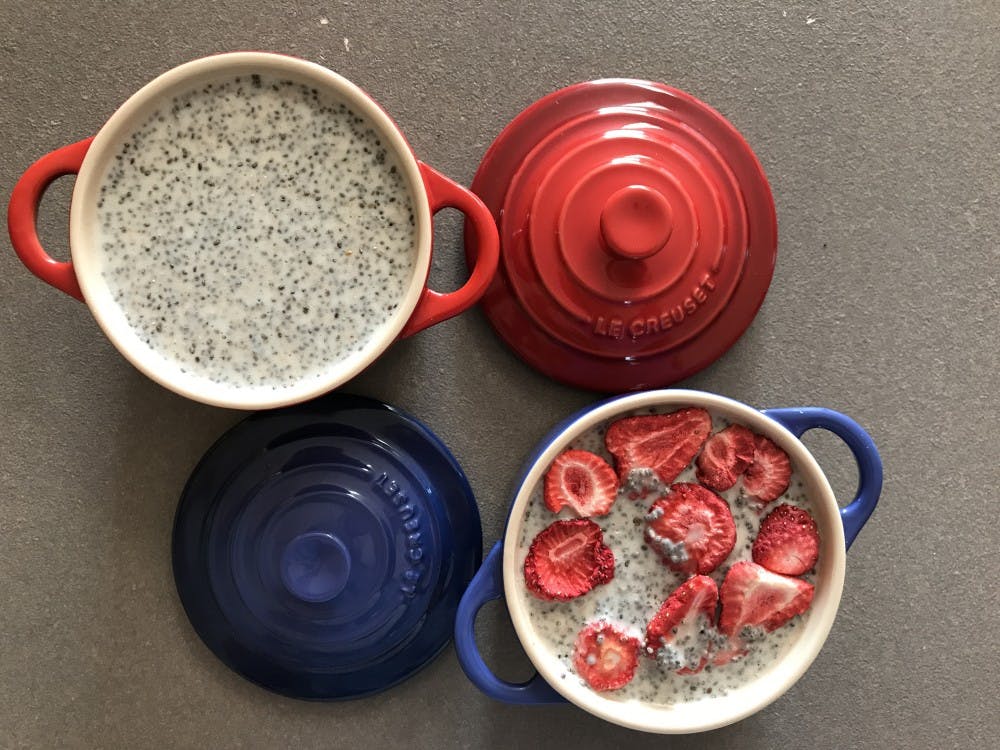While grocery shopping and meal planning probably aren’t at the top of everyone’s priority list during the first week of classes, they are an important component of daily life that only gets easier to incorporate into a routine with time.
Making an effort to buy food you like and will actually eat, along with learning a few basic recipes that will last for a few days in the fridge, are two of the most important skills (yes, cooking and grocery shopping are skills) a college student needs to learn early.
Make a list before you go to the store. I’m guilty of forgetting to do this, and I always regret it when I wander aimlessly for an hour and leave without half the things I had really needed. A good way to make a list is to open a note in your phone and write down ideas as they come to you throughout the week or when you run out of an item.
I’m constantly getting inspiration for recipes on Instagram and Facebook by scrolling through those delicious-looking demo videos that pop up when I’m most hungry.
The next essential step is to stock up on staples that you’ll come back to time and time again. Rice, noodles, quinoa, lentils, a favorite bread you can freeze and thaw in a pinch, a few canned goods like chickpeas and coconut milk and some frozen veggies.
Freezing food like bread and fresh produce is the easiest way to avoid wasting food that would normally go bad before you can use it. These ingredients are the basics you’ll need for most recipes to succeed, but they are really only the beginning. That’s where weekly grocery store trips come in to supply the flavor and freshness.
Practical application is the hardest part of being a food lover, but this week I’m excited to dive into a few simple recipes I encourage everyone to test. Right now, I want to focus on recipes that can save you money at the store by making a cheaper and healthier version than a store-bought option.
Coconut chia seed pudding
1 can of coconut milk
1/4 cup of chia seeds
2 tbsp of honey
1/2 tsp of vanilla extract
One of my favorites (and one that I made just the other day) is coconut chia seed pudding. You only need a few ingredients: a can of coconut milk, chia seeds, honey and vanilla extract.
Combine everything but the chia seeds in a blender, mix in the seeds, and then leave to soak for at least two hours. I usually do so overnight.
There are few things I love more for a delicious and ready-made breakfast. Plus, chia seeds are a great source of omega-3s and fiber.
Hummus
1 can of chickpeas (canned or dried that have been soaked)
2 tbsp of tahini
1 clove of garlic
Olive oil, salt, pepper, lemon to taste
Next up is hummus, one of the most readily available snacks at the grocery store and one that is actually very easy to make at home.
Stock up on chickpeas, garlic, olive oil and tahini, a sesame paste, which may be new to some but is an extremely versatile and useful ingredient that I recommend buying. I plan to base more recipes around tahini in future columns because I’ve recently realized how tasty and useful it can be.
For this hummus recipe, you can skip the tahini if needed and simply blend all the ingredients until you get the consistency you want.
A few other recipes I encourage students to try out are salsa and guacamole because those are especially easy to customize to your personal taste preference when made at home, and they only require a few basic ingredients.
While each of these ideas may seem basic, they can be the first steps to discovering your true likes and dislikes in the kitchen and the kind of cooking that draws you in. When you find a moment to slow down and think about eating in the chaos of the first week back, try one of these simple recipes and revel in the ease of making good, healthy food with minimal effort.
rarosens@indiana.edu @rachrosenstock






